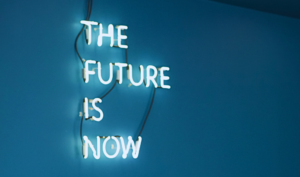
From Complexity to Clarity: Modern HR for Midmarket Growth
Sponsored by SAP SuccessFactors. Most weeks, you’ll find me on the road visiting customers, joining partner events, and connecting with our SAP teams around the

Sponsored by SAP SuccessFactors. Most weeks, you’ll find me on the road visiting customers, joining partner events, and connecting with our SAP teams around the

A CEO’s perspective on building high-performing, future-ready organizations. Sponsored by Betterworks. At our recent event, EmpowerHR 2025, I had the privilege of being surrounded by

Building rapport, goodwill, and respect among all team members is essential for the best collaborative sessions. How do you do that? “Transparency, openness, and a

Sponsored by Betterworks. The role of HR is changing faster than ever. As someone who’s spent over two decades in this field, I can confidently

A lack of workforce change readiness and can negatively impact employees and their organizations. The pace and intensity of change is only growing, and the

I’m always excited about live events. There’s something irreplaceable about people coming together to celebrate, to bond, to experience. The sense of community is priceless

Does culture eat strategy for breakfast? Maybe if it’s agile. When it comes to organizations, there’s a perpetual dance between stability and agility. No question,

AI has become a readily available tool for employers with a spectrum of high value use cases, including risk management. A recent poll showed that

Sponsored by Fama Technologies We have likely all had the experience of a bad hire. For some of us, horror stories come to mind. Finding

Longtime CHRO Ellyn Shook announced her retirement, sharing 3 key observations about her changing role. A recent C-Suite survey proves her right. This July, Ellyn

Sponsored by ExecOnline In today’s fast-paced business landscape, companies are contending with frequent organizational shakeups brought on by ever-changing economic conditions, market shifts, and the

In the wake of the pandemic, HR managers and business leaders have been pivotal in reshaping Employee Assistance Programs (EAPs) to better cater to their

Sponsored by Culture Amp Creating a business case for culture is a priority for senior HR leaders, CHROs, and CPOs. It’s especially true in these

The days of HR focusing solely on personnel management and administrative duties are long gone. Now, as organizations step fully into the digital era, the

Human resources can be a highly rewarding profession, especially at technology startup companies. In fact, recent research says effective human resources management actually helps drive

In today’s ever-shifting talent landscape, companies large and small are searching for more effective ways to attract, recognize, and retain their workforce. These opportunities come

As 2022 draws to a close, most organizations are deeply involved in planning, budgeting and forecasting for the coming year. To complete this rigorous process,

EDITOR’S NOTE: This is the last article in a 4-part series sponsored by Unit4. The series outlines a new approach to talent strategy for people-centric

Sponsored by: Ivanti You’ve heard the adage “measure twice, cut once.” It’s good advice from the sewing world. The idea is to encourage people who

Are you looking for proven ways to drive employee engagement? Many organizations find that collaboration is a highly effective strategy. For instance, consider these 10

If you’re ramping up for Q4 in your workplace, you may be anticipating a slew of quarterly performance reviews. It’s your manager’s last chance of

Sponsored by: SAP Concur The next chapter of the future of work – hybrid work—is underway as businesses return to the physical office in some

Benefits are one of the key pillars of good employee retention. According to data compiled by LinkedIn in 2020, “better compensation and benefits” was one

Sponsored by: QuantumWork Advisory In the classic comedy Office Space, Peter Gibbons and his friends have a permanent case of ‘the Mondays.’ Stuck in dead-end

Gone are those days when people used to travel to their workplaces. According to a Pew Research report, about one-fifth of workers having the flexibility to